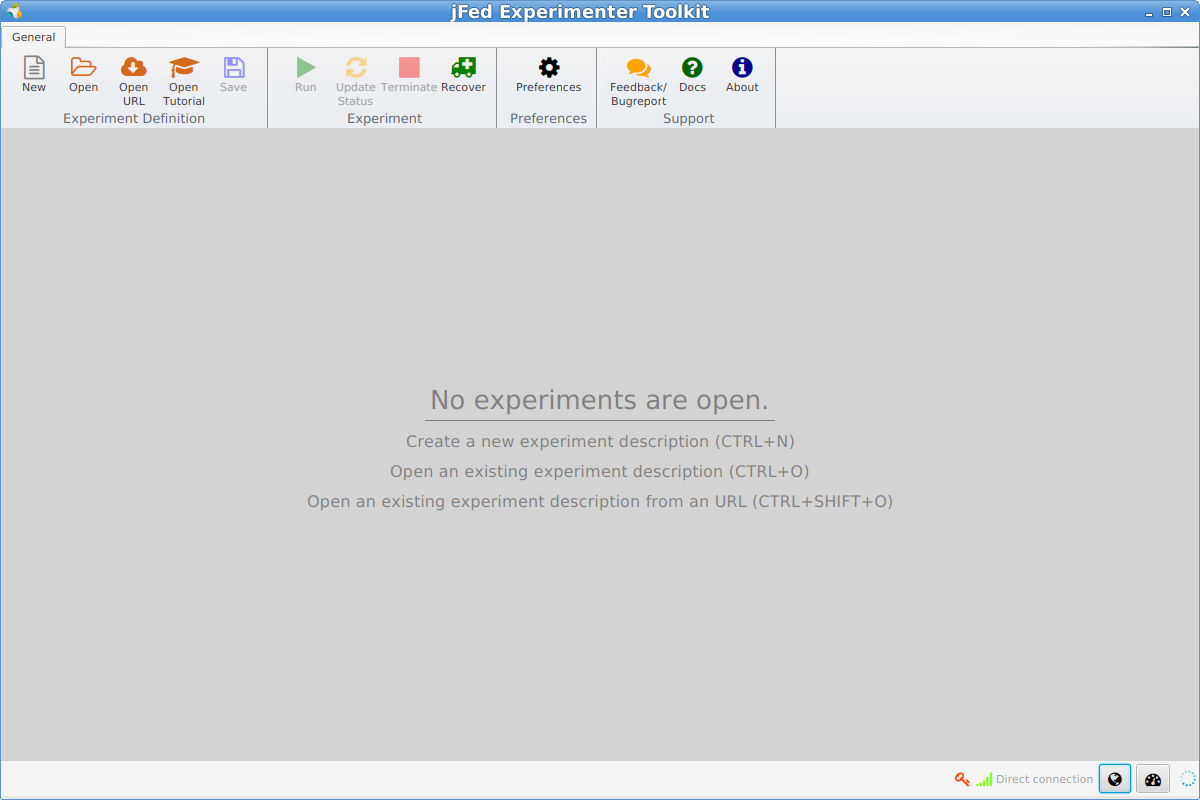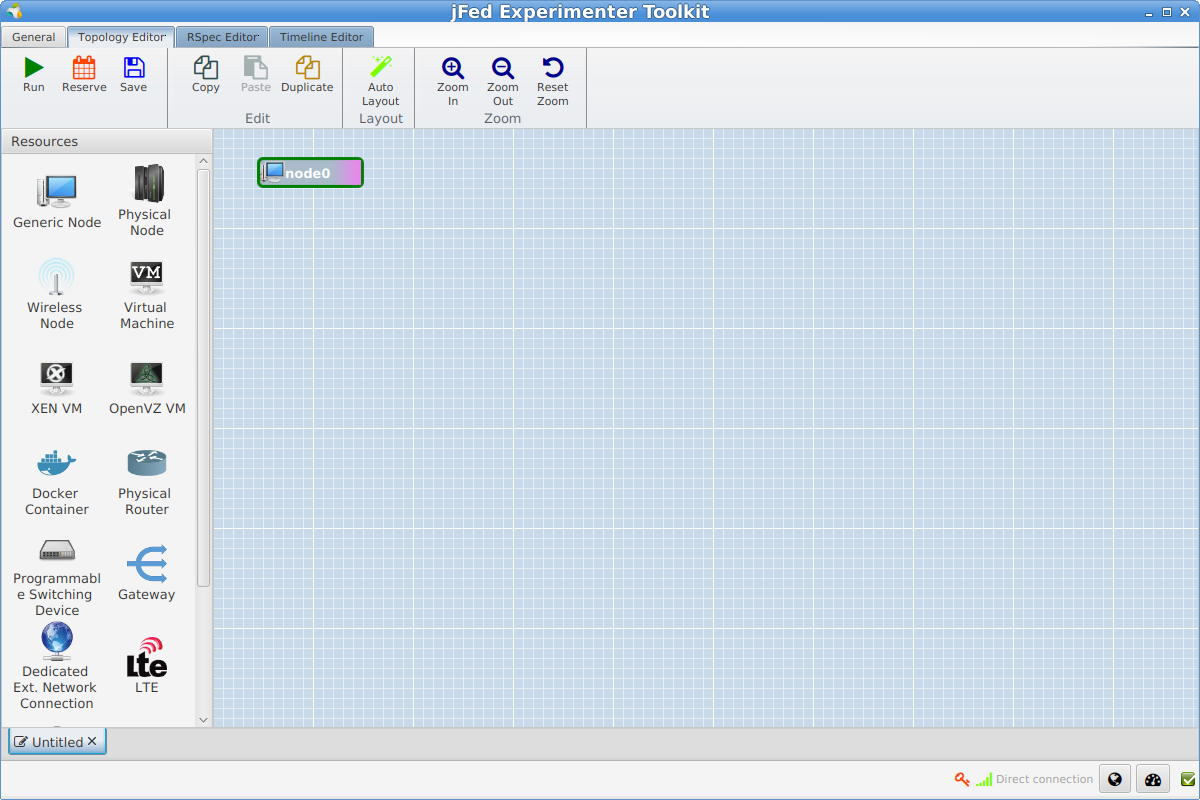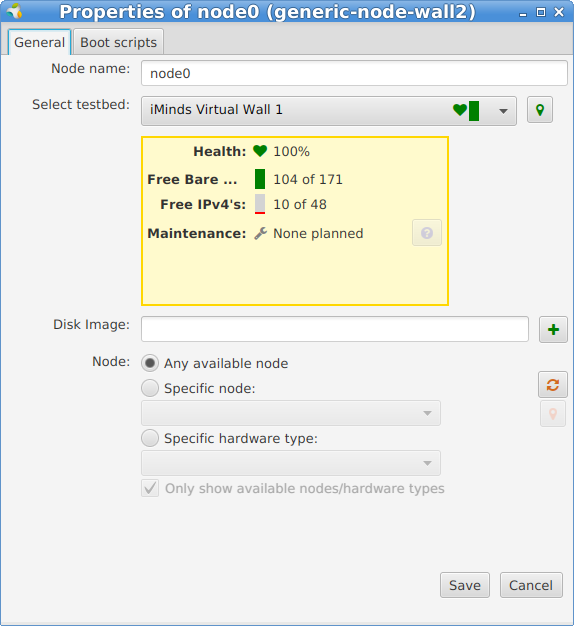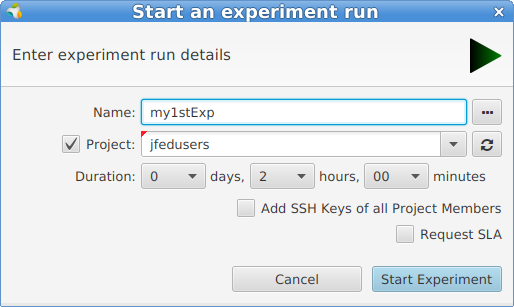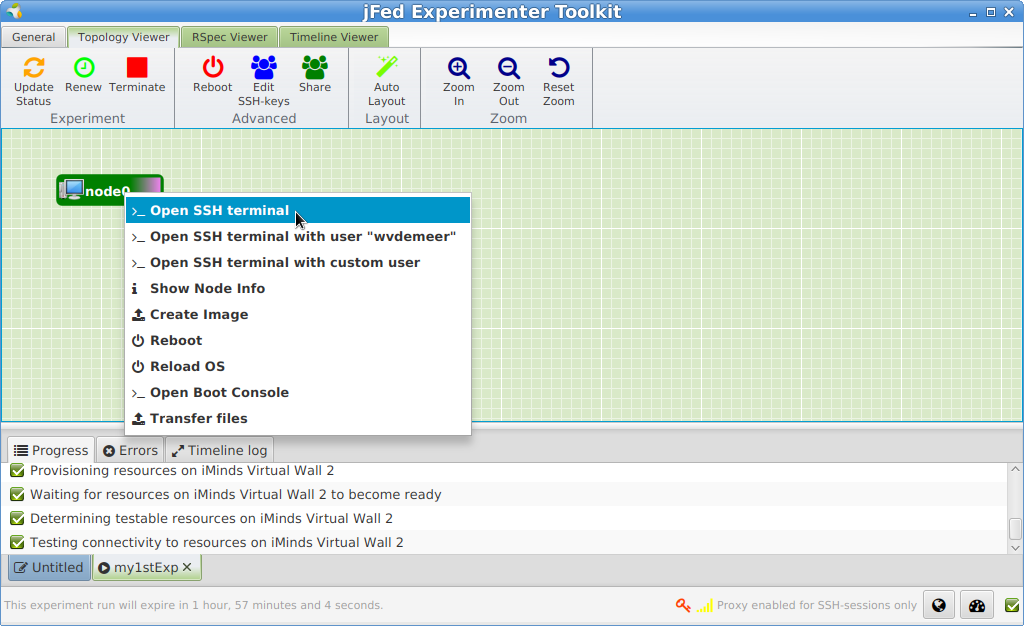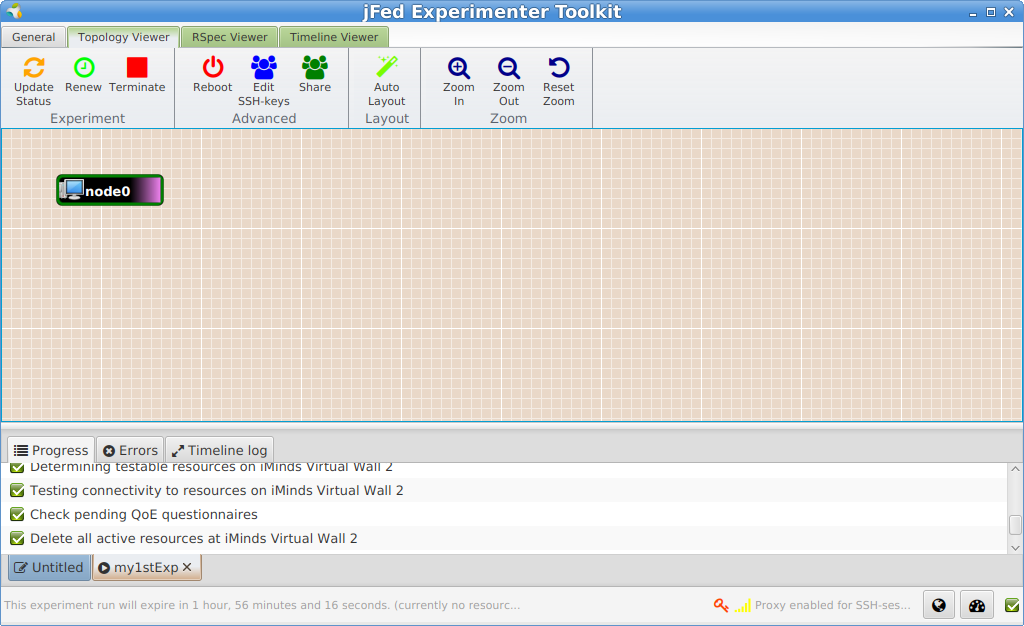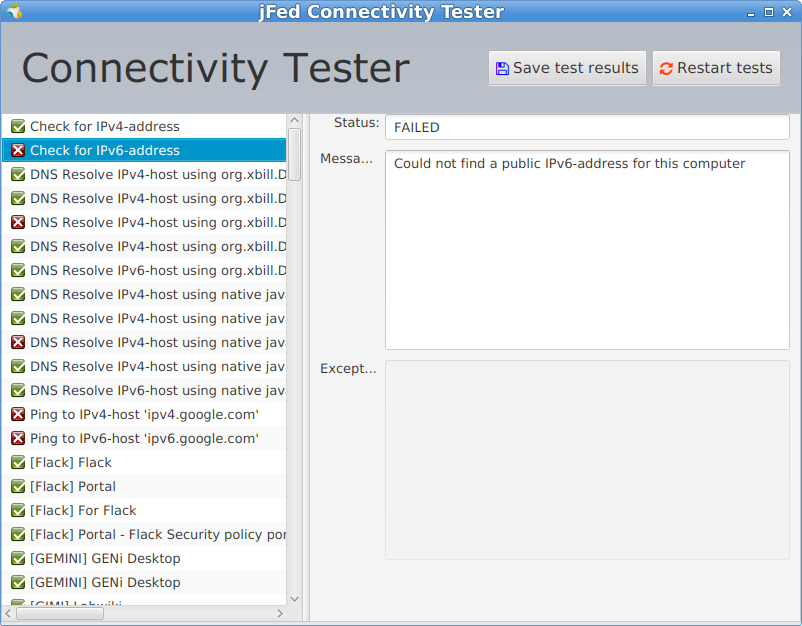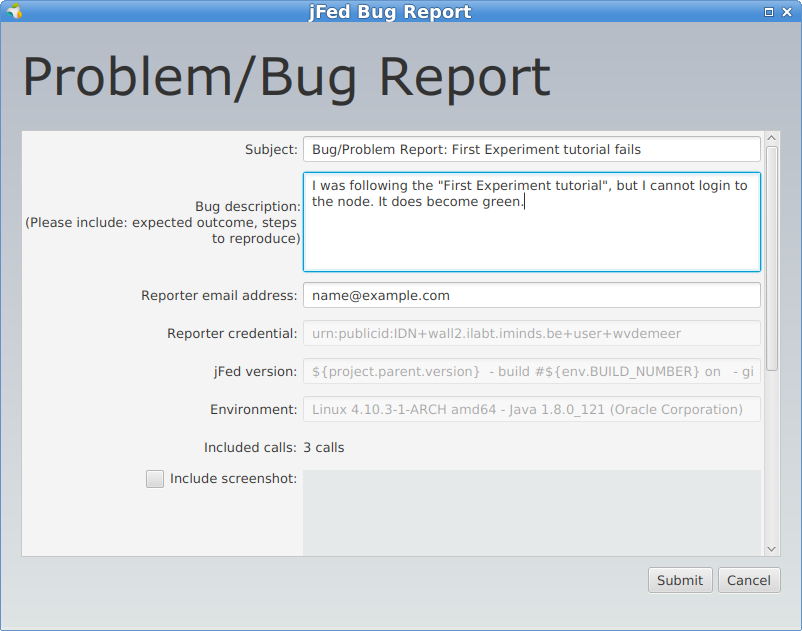Your First Experiment¶
When you have a Slices account (see Request A Slices Account), we can go on with a first experiment to show how you can access testbed resources.
For this we will use the jFed tool, and provision one physical server on the imec Virtual Wall testbed.
Create your first experiment¶
When you have logged in, and checked your preferences, you see jFed with no experiments loaded.
When you click New, you get a blank canvas where you can draw your experiment. Let’s drag in a Generic node
from the left side to the canvas.
For more specific experiments you can right click and configure the node, but for now let it in the default settings.
Running the experiment¶
Let’s run this experiment, by clicking the tab General at the top, and then the Run button. We will now have
to choose a name for the experiment (= slice name) and choose a maximum duration.
Attention
The default experiment duration is 2 hours. When doing a long-running experiment we recommend selecting an appropriate duration. Most testbeds enforce a maximum duration of 90 days. You can however always renew the experiment later on to extend its lifetime (always for a maximum of 90 days).
It will now take a couple of minutes to get the node prepared.
Login on a node of the experiment¶
When the node becomes green, we can right click on the node, and click Open SSH terminal.
And then you should be automatically logged in. If the node says Key refused or another error it means something has gone wrong. See Note on connectivity.
Ending the experiment¶
To release your resources before the end time of your experiment, you can click the Terminate button at the top in jFed.
After that the nodes will become black and if your ssh connection is still open, you can see that the node will be shutdown.
Note on connectivity¶
As in Europe public IPv4 addresses are scarce, we have the following problems for getting connected to the nodes:
- Testbeds as Virtual Wall or w-iLab.t are only accessible through IPv6
- Some testbeds have only a limited number of public IPv4 addresses, which is minimal in relation to the number of virtual machines they run.
- Other testbeds assign only private IPv4 address to their nodes, and access is possible through a gateway node (with a single public IPv4 address).
We are currently working around this in several ways. For the scenario in this tutorial, this is how it works:
- The default node that was selected is at the Virtual Wall testbed (which is only accessible through IPv6).
- If you have IPv6 all will be okay and you will be able to login on the node.
- If you don’t have IPv6, go to jFed preferences. Click
Run Proxy Testat the bottom right, and then clickAlwaysnext toProxy for SSH connectionsfollowed bySave. You can now right click the node to login through SSH and you will be proxied through an IPv4 server. - Alternatively, if you don’t have IPv6, you can register for an IPv6 address and tunnel, e.g. at Sixxs (choose AYIYA tunnel) and install Aiccu.
Test connectivity¶
You can test your connectivity with jFed by clicking the small globe button on the bottom.
And you will see a connectivity report:
Feedback and Bug reports in jFed¶
In case you cannot get a green node on your canvas (e.g. at the bottom of jFed you see problems passing by), click the
Feedback / Bugreport button in jFed and fill in a bug report. This will send all relevant information on calls and
connectivity to jFed staff, so they can investigate the problem and report back to you.
The reporter email address is standard filled in with your certificate email address and this is forwarded by the authority to your own email address. You don’t have to change this, but you can if you like.
Besides bug reports, you can also send question, feature requests, …
More advanced features¶
You can find information on more advanced features of jFed in the jFed documentation.
If you want to know how you were authenticated when logging into your node, see About the Slices Login Certificate.
